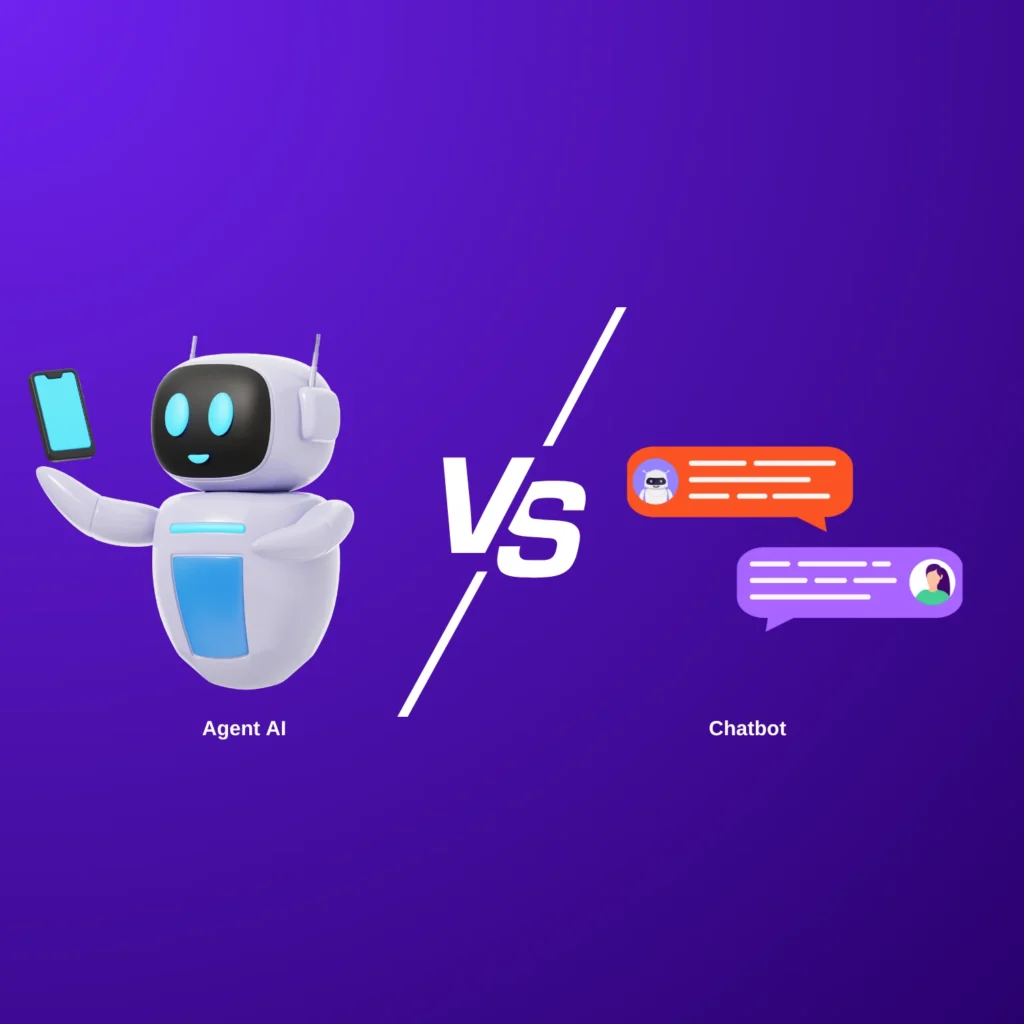In a mature Retrieval-Augmented Generation (RAG) system, data structuring is as important as model choice. A suboptimal rag token splitting strategy can drown your RAG in hallucinations, context bleed, or cost overruns. In this blog, we walk you through collect → clean → split → embed → store → retrieve → rerank with emphasis on rag token splitting: how to choose chunk boundaries, how parent–child context helps synthesis, how to govern and cost-optimize, and how to evaluate. By the end, you’ll have actionable best practices to improve Recall@k, reduce hallucination, and hit predictable latency and cost budgets.
Why Rag Token Splitting Matters
In a RAG pipeline, you convert documents into embeddings tied to small “chunks” (text segments), index them, then at query time retrieve relevant chunks and feed them (in context) to a generative LLM. How you split (i.e. your chunking or token-splitting strategy) critically influences:
- Semantic fidelity & coherence — chunks should preserve logical units (e.g. a complete clause, paragraph, or idea) rather than cut mid-thought.
- Recall & coverage — if relevant facts are divided across chunks, you risk missing them during retrieval.
- Answer completeness — the LLM may lack necessary context if the chunk is too narrow.
- Latency & cost / query — more, smaller chunks means more retrieval and embedding overhead; larger chunks use more tokens in reranking and LLM context, increasing cost.
- Hallucination risk — mixing heterogeneous concepts in a chunk dilutes representation and may confuse the model.
- Predictability — fixed-size splits give predictable embedding cost, but often at the cost of meaning.
Thus, rag token splitting is not just a preprocessing step but a lever you can and should tune as part of your model’s performance trade space (accuracy vs throughput vs cost).
Rag Token Splitting: Chunking Strategies
Below is a taxonomy of chunking strategies, with pros/cons, and when to use them.

Fixed-Size Token Chunks
This is the simplest strategy: split text into fixed-size chunks, e.g. 256, 512, or 1,024 tokens. Optionally with a fixed overlap (say 50 tokens).
Pros:
- Very predictable: batches, indexing, embedding pipelines are simplified.
- Easy to parallelize and shard.
- Low engineering complexity.
Cons:
- May cut sentences or semantic boundaries mid-thought.
- Chunks may mix multiple topics if text density varies.
- Not adaptive to variable content length.
This is often a good baseline for prototyping or uniform short documents. Many frameworks (LangChain, LlamaIndex) provide a simple token splitter that uses tiktoken to count tokens.
Sentence / Paragraph-Aware Splitting
Here you split at “natural” boundaries sentences or paragraphs while enforcing a maximum token budget per chunk.
Pros:
- Better semantic integrity chunks read more naturally.
- Less awkward mid-sentence breaks.
Cons:
- Chunk sizes become variable, complicating batch embedding.
- Some paragraphs may exceed token budget and need further splitting logic.
You often combine this with heuristics: merge adjacent sentences or paragraphs until the token limit is reached, then stop.
Sliding Window with Overlap
With sliding windows, you step a window across the text (e.g. chunk size = 512 tokens) but with overlap (e.g. 15–25%) so that you catch contexts that straddle chunk boundaries.
Pros:
- Reduces “boundary misses” the case where a query spans two chunks.
- Helps with continuity across chunk boundaries.
Cons:
- Duplicate storage / embedding (overlapped region repeated) → higher memory and storage costs.
- More redundant retrieval results, requiring deduplication downstream.
Recursive & Semantic Chunking
This method is adaptive: you recursively split by increasingly fine separators until chunks are within budget (e.g. first by section breaks, then paragraphs, then sentences). Some versions use embedding similarity to merge or split.
Pros:
- Adaptive to document structure.
- Respects semantic boundaries (sections, subsections).
- Works well in mixed-content corpora.
Cons:
- More complex to implement.
- Ingest-time cost is higher (especially for semantic versions).
- Challenges in consistency across reindexing.
LangChain’s RecursiveCharacterTextSplitter is one example.
Unstructured.io offers “smart chunking” strategies (e.g. by-title, by-similarity) that combine structural partitioning and semantic merging. (Unstructured)
Databricks has documented recursive and hybrid approaches.
Parent–Child Chunking Strategies
A powerful pattern is to maintain a two-level (or multi-level) hierarchy:
- Children chunks: fine-grained (e.g. 256–512 tokens) that are retrieved during search
- Parent chunks: coarser-grained (e.g. 1,000–2,000 tokens or section-level), included optionally in the context to help synthesis
When you retrieve, you fetch matching child chunks; optionally you also fetch the parent chunk(s) so the LLM has a broader context. Metadata encodes parent-child relationships to govern which parent(s) apply to which children.
Advantages:
- Good balance: precision from children, context from parent.
- Helps avoid “fragmented context” when children alone lack connective narrative.
- Enables fallback: if children coverage is weak, parent gives fallback context.
Trade-offs & complexity:
- Additional metadata and index complexity.
- More storage (parents and children both embedded) and more retrieval orchestration.
- Risk of duplicate or redundant context if not deduped carefully.
Domain-Specific Splitters
Certain domains benefit heavily from specialized splitting rules:
- Code / APIs: split by function, class, module, with comments and docstrings attached.
- Legal / contracts: split by clause, article, section numbering.
- FAQs / Q&A corpora: each Q&A as a chunk or split the answer body further.
- Tables / spreadsheets: chunk by row + header context, or by cell, with structural metadata.
These custom splitters often outperform generic token/sentence splitters in domain-specific domains. Many practitioners use hybrid logic: detect domain (e.g. via file extension or schema) and apply domain-aware splitting for those docs.
Rag Token Splitting: Choosing Chunk Size & Overlap
Choosing a chunk size and overlap is a core tuning lever. Here are rules of thumb (but experiment!):
- Short, high-density Q&A style corpora: 256–512 tokens often works best.
- Long narrative or expository text: 512–1,024 tokens gives more context per chunk.
- Very short fragments / low-content docs: you may even go down to 128–256 tokens.
Overlap: 10–25% is typical. For example, with 512-token chunk size, an overlap of 50–128 tokens is common.
Dynamic / cascade strategy:
You can use children (small chunks) for precise retrieval, fetch parent(s) (larger) for synthesis. The children ensure fine-grained relevance; the parent ensures the model has connective context.
Practical heuristic:
If a query returns two child chunks that are adjacent under the same parent, consider also retrieving their common parent chunk to provide the larger narrative context.
Always run A/B tests: e.g. compare 512 tokens / 10% overlap vs 256 / 20% vs semantic chunking. Monitor Recall@k, boundary-miss error, latency, cost.
Metadata, Hierarchies & Document IDs
To manage chunked data well in production, robust metadata is nonnegotiable.
Mandatory metadata fields per chunk:
- source_id or doc_id (the original document)
- section_id / heading / path to locate the chunk in original structure
- chunk_id or seq_num
- token_offsets (start_token, end_token) or (char_start, char_end) for accurate highlighting / citations
- version or ingestion_date (for reindexing / stale detection)
- language / locale
- permissions / access_control_tags (for governance / permission-aware retrieval)
- canonical_url / source_reference
- checksum / content_hash (to detect duplication or drift)
Hierarchical / relational metadata:
- parent_chunk_id (for parent–child linking)
- children_ids (in parent)
- breadcrumb_path (e.g. [doc → section → subsection → chunk])
- chunk_type tag (child, parent, summary, etc.)
With these relationships, you can filter or group results, dedupe overlapping retrievals, and support incremental reindexing (e.g. reindex only changed children, not entire parents).
Also maintain a doc-level manifest to control reindexing, version rollbacks (blue/green), and lineage.
Embeddings & Storage
Text normalization
Do light normalization only: preserve acronyms, units, special IDs. Over-normalization (e.g. lowercasing everything, stripping punctuation) can strip meaningful signals. But also remove boilerplate, watermarks, page headers/footers.
Multi-vector per chunk
To improve retrieval precision, some systems encode:
- Title / heading as separate embedding
- Body as main embedding
You can store two vectors (or merged) per chunk. During retrieval, you may boost matches on title embedding.
Index choices (ANN, HNSW, IVF etc.)
- Use HNSW for low-latency, high-accuracy nearest neighbor search.
- Consider IVF + quantization for large scale corpora.
- Use approximate quantization (e.g. PQ, OPQ) or compress embeddings for cost savings.
- Use disk- or SSD-backed on-disk indexes for large collections.
Also store metadata fields in the vector DB so you can filter pre-retrieval (e.g. permission filters, version filters).
Token offsets & pointers
Because you want to support precise citation, store token offsets (or character offsets) so that once a LLM output references “this sentence,” you can resolve it back to the source document. You may also store sentence-level boundaries in metadata for downstream highlighting.
Retrieval Pipeline Design
A robust retrieval pipeline layers techniques to balance precision, latency, and hallucination.
Hybrid Search (BM25 + Vector)
Combine a sparse (BM25 / inverted index) search over the raw text or tokenized text with your vector search. This helps surface exact matches (IDs, exact names, rare tokens). Then merge results. Many systems rank BM25 + vector results together.
Rerankers (Cross-Encoder)
Retrieve a large candidate pool (e.g. top-100 vector hits, top-50 BM25 hits) and then rerank with a heavier model (cross-encoder) to pick top-k (say 10–20). A cross-encoder is slower but more precise.
Query Expansion & Multi-Query
Generate paraphrases, expand acronyms, or create multiple query vectors. E.g. user asks “XYZ protocol,” you also generate “X Y Z protocol,” “XYZ protocol definition,” etc. These multiple vectors help hit varied chunks.
Context Assembly
Once you have reranked candidates, you need to select which chunks to send to the LLM. Strategies:
- Dedupe: remove near-duplicates or overlapping chunks.
- Diversity / coverage: ensure different sections or semantic topics are covered.
- Token budget capping: greedily add highest scoring until the token limit is reached.
- Parent injection: if children are from same parent, optionally add parent chunk if budget allows.
Query Understanding & Routing
Classify the user intent (factoid, synthesis, comparison). For “fact lookup,” you might prefer smaller chunks or direct BM25 hits. For “synthesis/essay,” you may route to deeper, broader context retrieval. Intent determines chunking depth, reranker strength, multi-hop logic.
Multi-hop Retrieval
For complex queries requiring reasoning across documents or multiple jumps:
- Query → retrieve first-hop chunks
- Synthesize intermediate query or sub-question
- Retrieve second-hop chunks given context
- Aggregate and feed into final synthesis
Manage context propagation (carry forward selected context embeddings) and avoid drift or loop. Use token budget wisely.
Safety & Governance
- PII detection / redaction at ingest time (before embedding). Use named-entity detection or regex rules to remove or mask sensitive text.
- Ingestion-time moderation: filter disallowed content, harmful text.
- Permission-aware retrieval filters: use metadata filters so that only authorized chunks are returned per user or role.
- Audit logging: log which chunks / docs were retrieved for each query (user, timestamp, chunk_ids) to support compliance and debugging.
Cost & Performance Optimization
Embedding Storage Costs
- Quantization / pruning: reduce embedding size (e.g. 16→8 bit) or prune seldom-used dimensions.
- Tiered storage: store cold chunks in cheaper storage; hot or high-access in fast storage.
- Compression / dedupe: detect duplicate chunks and store only one embedding.
Computational Efficiency
- Cache frequent queries or dummy keys (e.g. popular queries) to skip retrieval or rerank.
- Batch embeddings or retrievals to better utilize compute.
- Index tuning: adjust HNSW parameters (ef, M) or IVF clusters for throughput vs recall tradeoffs.
Token Budget Management
- Dynamically choose how many chunks to include based on query difficulty: simple fact queries get narrow context; complex ones get broad context.
- Prioritize highest-score chunks rather than naive top-k.
- Skip or truncate redundant chunks.
Implementation Tools & Patterns
Open-Source Libraries
- LangChain / LlamaIndex: built-in splitters (Character, Recursive, Sentence) that you can override.
- Unstructured.io: smart partitioning and chunking strategies.
- Open-source vector DBs like Pinecone, Weaviate, Qdrant etc., allow metadata filters and custom index tuning.
Often start with library defaults, then override for domain-specific logic (legal, code, tables).
Production Deployment
- Ingestion: batch vs real-time pipelines; backfills for historical docs.
- Reindex strategy: full index vs delta updates.
- Versioning: embedding model version control (so you can roll back).
- Blue/green index swap: build next version in shadow and swap.
- Monitoring drift: queue documents whose similarity to existing chunks is too high/low.
Monitoring & Alerting
Track key metrics:
- Recall@k, nDCG
- Context precision (fraction of tokens in context relevant)
- P95/P99 latency, QPS
- Cost/query (embedding + reranking + LLM cost)
- Hallucination / citation error rate
Set guardrails and alerts if e.g. recall drops or latency degrades. Also monitor embedding distribution drift: if your new chunks embed far from past, chunking may be misbehaving.
RAG Token Splitting Evaluation: What to Measure
Offline Metrics
- Exact Match / F1 for extractive tasks
- Recall@k / Precision@k / nDCG@k for retrieval
- Context precision / overlap metrics
- Latency metrics (P50, P95, P99)
- Cost per query (compute, embedding, inference)
Human-in-the-Loop Evaluation
- Label retrieved chunks as relevant / irrelevant.
- Rate final generated answers for correctness, fluency, hallucination, citation accuracy.
- Maintain annotation guidelines and blind-style tests.
A/B Testing in Production
- Deploy alternative chunking configurations (e.g. 512 token fixed vs recursive) to subsets of users or traffic.
- Compare metrics: relevance, latency, user satisfaction.
- Monitor hallucination or citation errors as guardrail constraints.
Production Considerations & Trade-offs
Latency vs Accuracy
- Smaller chunk sizes → faster retrieval but potential context fragmentation.
- Deeper reranker stages (e.g. cross-encoder) increase cost/latency.
- You may trade off slight drops in nDCG for halved latency to hit SLAs.
Scaling
- Millions or billions of chunks: shard indexes, distribute over multiple nodes or regions.
- Shard by doc_id / namespace to support multi-tenant use.
- Use streaming or micro-batching ingestion to reduce memory spikes.
Maintenance
- Reindex cadence: weekly, daily, or on change events.
- Delta updates: embed only changed or new documents.
- Embedding model upgrades: versioning, reembed pipelines, graceful rollouts.
- Metadata drift: detect misaligned or orphan chunks.
Rag Token Splitting Case Patterns & Pitfalls
Common Pitfalls
- Over-large chunks: too coarse, poor retrieval discrimination.
- Zero overlap: boundary misses.
- Over-cleaning / stripping key tokens: you lose domain-specific signals.
- Missing / inconsistent metadata: broken lineage, lost citations.
- No permission / governance controls: data leakage risk.
Case Study: Before & After
- Docs Search (generic manuals)
- Before: fixed 512 token chunks, no overlap → many boundary misses, recall @20 = X
- After: section-aware splitting + 20% overlap → recall @20 improves by ~40%, boundary misses down ~18%.
- Legal / contract corpora
- Before: sentence-level splitting → many references broken across chunks.
- After: clause-aware splitting + parent context → much cleaner citations and better answer precision.
- Code / API docs
- Before: naive text splitter → functions broken.
- After: function-level split + module-level parent context → answer accuracy increased, latency dropped ~12%.
| Strategy | Typical Size | Overlap | Best For | Watch Outs |
| Fixed Token | 256–512 | 0–10% | Short FAQs, snippets | Cuts sentences mid-way |
| Sentence-Aware | 2–6 sentences | 0–10% | Articles, manuals | Variable token sizes |
| Sliding Window | 384–768 | 15–25% | Dense technical text | Duplicate hits, cost overhead |
| Section-Aware | 512–1,024 | 10–15% | SOPs, legal, docs | Uneven chunk sizes |
| Parent–Child | Child 256–512; Parent 1–2k | 10–20% | High recall + coherent synthesis | More index/management complexity |
| Recursive/Semantic | Dynamic | 10–20% | Mixed corpora, intelligent splitting | More compute at ingest time |
Rag Token Splitting Implementation Checklist
- Define document-type–aware splitters (text, legal, code, tables)
- Set baseline chunk size(s) and overlap; experiment with a few variants
- Ingest and embed children; generate parent chunks (if using)
- Populate metadata (doc_id, chunk_id, parent_id, offsets, permissions, checksums)
- Index embeddings in vector DB with metadata filters
- Build hybrid BM25 + vector retrieval layer
- Implement reranker (cross-encoder) on top candidates
- Build context assembly and budget-based chunk selection
- Add parent chunks when helpful (parent–child injection)
- Integrate PII detection/redaction in ingestion
- Add permission filters and audit logging
- Create reindexing / delta update plan (blue/green swap)
- Monitor Recall@k, nDCG, latency, cost/query, hallucination rate
- Set alerts for drift / performance regression
- Schedule periodic review of chunking settings and reranker thresholds
FAQs
How do I handle mixed content (text + tables + code)?
Apply modality-specific splitters: extract tables separately (split rows with header context), split code by function or class, and process surrounding narrative via text chunking. Then embed and index all chunk types, and tag modality in metadata so queries can filter appropriately.
Does chunk size depend on the embedding model?
Yes. For models with small context windows (e.g. 512–1,024 tokens) you must ensure chunks don’t exceed that. If you move to a larger window model (e.g. 4,096 tokens), you can afford larger chunks but the tradeoffs (semantic dilution, retrieval cost) still apply.
How often should I re-evaluate chunking?
At every major dataset addition, embedding model upgrade, or annually. Also monitor retrieval metrics drift: if Recall@k falls persistently, revisit chunking settings.
Signs my chunking needs optimization?
- Low recall or many “not found” queries
- Hallucinations or missing facts
- Boundary misses (when queries span chunk edges)
- Citation errors or incorrect attribution
- Latency or cost blow-up
Hybrid or vector-only retrieval?
Hybrid (BM25 + vector) is safer in production: it preserves exact term matches (IDs, rare tokens) and complements vector retrieval. Vector-only may miss exact-match queries.
Do I always need overlap?
Not always but zero overlap risks losing context at chunk boundaries, so a small overlap (10–25%) is recommended in most workflows.
How to handle PDFs and tables for accurate citations?
Parse PDF into logical text elements (paragraphs, table rows, headers). For tables, flatten rows with column header context. Maintain offsets mapping back to original page/coordinates. Use token offsets to map responses back to source.
Can I mix languages in one index?
Yes, store language metadata. But embedding quality may vary across languages. You may partition indexes by language for performance or filtering.



